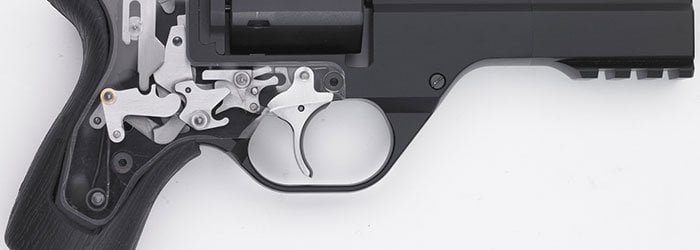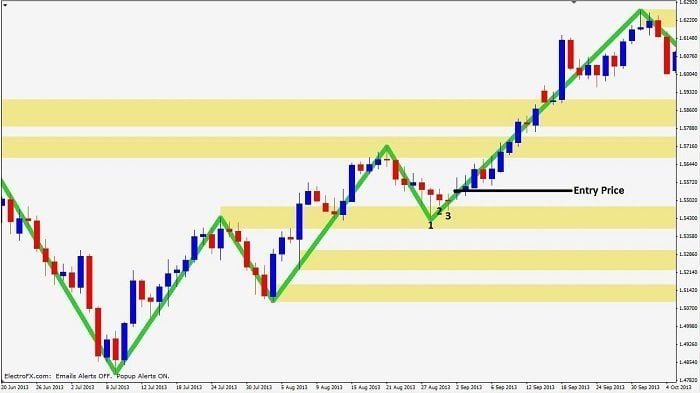
It’s Time to Learn When to Pull the Trigger
You now know how to read price action to a point where you are ready to enter a trade. What you need next is to have a trigger mechanism that will allow you to execute your entry. You have read the support & resistance and supply & demand areas to determine good location. You have used the chart patterns to understand how price has arrived at this location. The same chart patterns also told you what type of trade you are about to attempt. You just need a defined repeatable way in.
Your entry trigger mechanism will show you on a smaller scale than you are definitely not alone at your analyzed location. This will be your best way into the trade. We will now use Japanese candlesticks as our entry triggers since this is a very common chart and everyone will have immediate access. If you don’t have your trading platform set up yet, then choose a broker and grab a free demo here. In order for you to understand their place in the puzzle, we will continue on with the 3 trade examples that we have been using so far. If you need a quick refresher then go back and revisit the Japanese candlesticks basics here.
Entering the Trend Continuation Buy
The first trade that we have been using in these lessons is the trend continuation pattern. With location and market structure on our side, all we needed was a definable way to actually enter the trade. Seeing an indecision candle at our chosen location means that we are not the only ones thinking the way we are and a battle has begun. The only thing left is to see price pass that indecision in the direction that we want it to go and we can enter with confidence.

In this example you can see 3 distinct indecision candles at that location so we will work our way through them.
- This indecision candle reacts exactly from our chosen area confirming that it is active,
all we need now is to pass its high on the next candle which does not happen. - This indecision candle continues on the indecision at our chosen area,
all we need now is to pass its high on the next candle which does not happen. - This indecision candle continues on the indecision at our chosen area,
all we need now is to pass its high on the next candle which does happen and that is our entry price.
By using indecision candle/s to confirm that the chosen area is active you can trade what is effectively the decision. It will not work out 100% of the time but you don’t need it to.
Entering the Double Top Sell
The next trade that we have been using for these lessons is the double top trade. The location was inherent within the structure itself and all that we needed was a definable way to enter the trade. By using an indecision candle once again we can confirm that we are not the only ones seeing things this way and a battle has begun. If price passes that indecision, in the direction of our expected trade, then we are effectively going with the decision that is then being made. Don’t forget, us retail traders don’t really move this market and we need to let big players fight it out and go with the apparent winners.

In this example, there are 3 distinct indecision candles at our chosen location.
- This indecision candle reacts exactly from our chosen area confirming that it is active,
all we need now is to pass its low on the next candle which does happen,
the negative on this trigger is that it is immediately following a bullish marubozo. - This indecision candle continues on the indecision at our chosen area,
all we need now is to pass its low on the next candle which does not happen. - This indecision candle continues on the indecision at our chosen area,
all we need now is to pass its low on the next candle which does happen and that is our entry price.
What we have done here is effectively trade the decision that was made after indecision, and at the right location. Even if you are 1 day/candle later than the #3 trigger you could still enter.
Entering the 3-Point Turn Buy
The last and most recent trade that we have been using in these lessons is the 3-point turn style pattern. This pattern followed the reset in the upward momentum and also the break of 2 major highs. Both the reset and the 2 major highs were, of course, all part of the double top itself which was the trade we just discussed. With location and market structure on our side, all we needed was a definable way to actually enter the trade. Using an indecision candle once again, we can confirm that we are not the only ones seeing things this way and another battle is underway. Once price passes the indecision in the direction of our expected trade then it would be a reasonable assumption that a winner is emerging.

In this example, there are 2 distinct indecision candles at our chosen location.
- This indecision candle follows the initial reaction from our chosen area ad confirms that it is active,
all we need now is to pass its high on the next candle which does happen, - This indecision candle continues on the indecision at our chosen area,
all we need now is to pass its high on the next candle which does happen and that is our entry price.
Once again we have effectively traded a decision that was made after indecision, and at the right location.
Adding to Price Action Confluence
In the previous lesson, we covered price action confluence. The entry trigger mechanism simply adds on to that. It would have been too much for page and all you need to do at this point is to understand the concept of confluence. In the next lesson, you will learn about one last thing that can be added to the confluence you look for. Then it will be time to decide on your stop loss and take profit.
